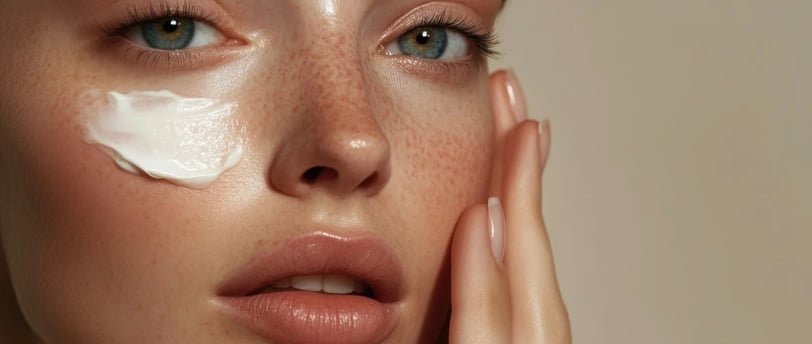The Complete Guide to Moisturizers: Choosing the Right Cream for Every Skin Type and Need
Moisturizer is the foundation of any skincare routine, essential for keeping your skin healthy, comfortable, and resilient no matter your skin type or concerns. Here’s a thorough look at what moisturizers do, why they’re needed, the differences between day and night creams, the variety of textures and forms available, and how to choose the right one for your skin’s needs and goals.


Why Do We Use Moisturizer?
Moisturizers hydrate the skin, reinforce the skin barrier, and protect against environmental stressors. They increase water content in the outer skin layer, reduce transepidermal water loss, and form a protective, soothing film that covers small skin fissures and shields against friction and irritation. This not only prevents dryness, flakiness, and discomfort but also improves skin texture, smoothness, and elasticity, making skin appear plumper and more youthful.
Key benefits include:
Hydration: Delivers and locks in moisture, preventing dry, rough, or itchy skin.
Barrier Protection: Shields from pollution, UV, and harsh weather while supporting barrier repair.
Soothing & Anti-Inflammatory: Ingredients like ceramides, oat extract, or allantoin calm irritation and redness.
Anti-Aging: Hydrated skin is more elastic and less prone to fine lines and wrinkles.
Oil Regulation: Proper hydration helps balance oil production and can prevent breakouts.
Comfort: Relieves tightness, itching, and discomfort from dryness or environmental exposure.
Day vs. Night Moisturizers: What’s the Difference?
Day Creams:
Lightweight, non-greasy, and absorb quickly for comfortable wear under makeup.
Often include SPF and antioxidants (like vitamin C) to protect against UV rays and pollution.
Focus on hydration and defense against daily environmental stressors.
Night Creams:
Richer, more nourishing, and designed to support overnight repair and regeneration.
May contain actives like retinol, peptides, or ceramides for anti-aging and barrier support.
No SPF, as sun protection isn’t needed at night.
Using both ensures round-the-clock hydration, protection, and targeted treatment for your skin’s changing needs.
Moisturizer Textures & Forms
Gel: Lightweight, water-based, fast-absorbing; best for oily, acne-prone, or combination skin.
Lotion: Light, easily spreadable; good for normal to slightly dry or combination skin.
Cream: Thicker, more emollient; ideal for dry, mature, or sensitive skin.
Ointment/Balm: Very thick, occlusive; best for very dry, compromised, or eczema-prone skin.
Gel-cream/Water-cream: Hybrid textures for those wanting hydration without heaviness.
Choosing a Moisturizer for Your Skin Type
Oily/Acne-Prone: Gel or oil-free lotions with humectants (hyaluronic acid, glycerin), non-comedogenic, lightweight, and mattifying.
Dry: Creams or balms rich in emollients and occlusives (ceramides, shea butter, squalane); look for barrier-repairing formulas.
Combination: Gel-cream or lotion; balance of hydration and lightweight feel.
Sensitive: Fragrance-free, hypoallergenic creams with soothing ingredients (panthenol, centella, oat extract).
Mature: Creams with peptides, ceramides, antioxidants, and retinoids for anti-aging and barrier support.
Normal: Most textures work; adjust seasonally or as your skin changes.
Moisturizers for Different Goals
Hydration: Humectants (hyaluronic acid, glycerin), lightweight gels or creams.
Anti-Aging: Peptides, retinol, antioxidants, ceramides; richer creams for overnight use.
Acne-Prone: Oil-free, non-comedogenic, with niacinamide or salicylic acid.
Barrier Repair/Regeneration: Ceramides, fatty acids, cholesterol, panthenol, centella asiatica.
Soothing/Redness: Oat extract, allantoin, bisabolol, centella, calendula.
When and How to Use Moisturizer
Apply after cleansing and serums, before sunscreen (AM) or as the last step (PM).
Use daily, morning and night, for best results.
Adjust texture and ingredients as your skin’s needs change with seasons, age, or environment
Moisturizers are essential for every skin type and concern, providing hydration, protection, and targeted benefits from anti-aging to acne control and barrier repair. Choosing the right formula and texture ensures your skin stays healthy, comfortable, and resilient, day and night. Consistent use is key to unlocking your skin’s best look and feel.
